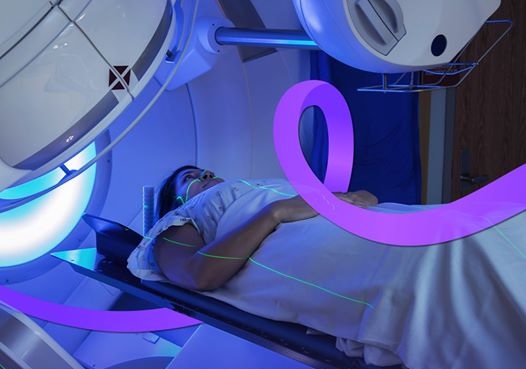Widely used for the treatment of cancer, chemotherapy refers to the use of medicines to prevent cancer cells from dividing and growing further. This is done by first killing the target cells that are capable of multiplying abnormally. In chemotherapy, a wide variety of drugs can be used to achieve results, however, the effectiveness of the therapy depends on the stage of cancer at which the patient is being treated. Although at times there are side effects of chemotherapy, the benefits of the treatment outweigh the other factors.
The drugs used in chemotherapy treatment are sometimes known as cytotoxic drugs. Chemotherapy treatment may differ depending upon the type of cancer as well. Some treatments may just consist of one drug (or more), which are administered over a period of a few days or a few weeks. The chemotherapy treatment is divided into courses and the sessions will depend upon the regime that’s suggested to the patient and on the type of cancer being treated.
The Process
Depending on the type of cancer and the treatment being received, there are different routes that can be followed for providing chemotherapy to a patient. However, the most common routes followed for chemotherapy are by injecting the drug into the vein (intravenously), injecting the drug into the muscle (intramuscularly), or injecting it under the skin (subcutaneously). There are a few cases where chemotherapy is performed by injecting the drug into the fluid of the spinal cord, i.e. intrathecally. Irrespective of the type of process used, the drugs are absorbed into the bloodstream and then spread through the body to reach the cancer cells.
Intravenous Chemotherapy
Intravenous (IV) chemotherapy can be also given through drips into a vein in the patient’s arm. Here, a cannula, i.e. a fine tube, is inserted into the vein and the drugs are passed onto the blood to reach the cancer cells via the drip. The tube, however, will be removed before the patient goes home. For some patients, the veins in the arm are difficult to locate, so instead of a cannula, a Peripherally Inserted Central Venous Catheter (PICC) is used. The PICC is an extremely fine tube that is placed into a vein in the crook of the arm.
Alternatively, some patients receive chemotherapy through a central line, which is tunneled, so that it works underneath the skin and ends up in one of the large veins leading up to the heart. Two of the most popular placements for the central line are the ‘Pectoral Region’, which takes the sub-clavicular approach, and the ‘Neck Region’, which takes the internal jugular vein approach. It is important to know that the central line is inserted when the patient is sedated under light anaesthesia.
Oral Chemotherapy
Another type of chemotherapy is where the drugs are passed onto the blood by the mouth i.e. orally. In the oral chemotherapy process, tablets may also be given and the sessions can be conducted at the patient’s home itself, where a doctor or nurse can guide on how and when the medicines are to be taken as per the prescription.
How Chemotherapy Works and the Treatment Plan
Since cancer cells abnormally multiply and rapidly grow and divide, the drugs given by any of the chemotherapy procedures kill all such rapidly dividing cells. However, the drugs cannot differentiate between cancer cells and other unaffected rapidly dividing cells like skin, bone marrow, hair follicles, and so on, so there are also possibilities for side effects. Because of this, the blood count of the patient may frequently fluctuate, leading to a delay in the further chemotherapy sessions if the blood count doesn’t recover. The treating doctor will regularly conduct blood tests, X-rays, and scans to keep a check on the patients’ response to chemotherapy treatment.
Before the chemotherapy sessions start, it is important that the treating physician explains the benefits as well as the side effects of the treatment. Though the side effects can be tackled, it is always important to ensure that the patients and their families are informed and consent to the treatment plan.
Side Effects of Chemotherapy
Not every patient who receives chemotherapy will face side effects. However, here are some of the most common side effects that may be experienced by a patient because of chemotherapy –
- Hair loss
- Sore mouth
- Skin Changes
- Taste changes
- Nausea and vomiting
- Changes in bowel habit
- Fatigue
- Infection
- Bleeding and bruising
- Infertility and reduced libido.
It is important to know that most of these side effects are temporary and that they usually go away once the treatment is completed. However, in a few cases, you might have to consult the doctor, although here again, the side-effects are treatable.
Receiving the Chemotherapy Treatment
The type of chemotherapy prescribed to the patient will determine if a patient needs to stay in the hospital or needs to visit the hospital only during the sessions. It can be done either on an outpatient basis in the Day Treatment Unit or as an inpatient procedure in the Haematology Ward. If the patient is receiving the chemotherapy sessions in the day care treatment unit, the patient has to undergo a few tests as prescribed by the doctor before the treatment starts.
The sooner the cancer is treated, the faster a reduction can be affected in the number of chemotherapy sessions. While some of the patients will be able to continue with their daily routine during the sessions, some might have to make a few changes to their daily routine.


